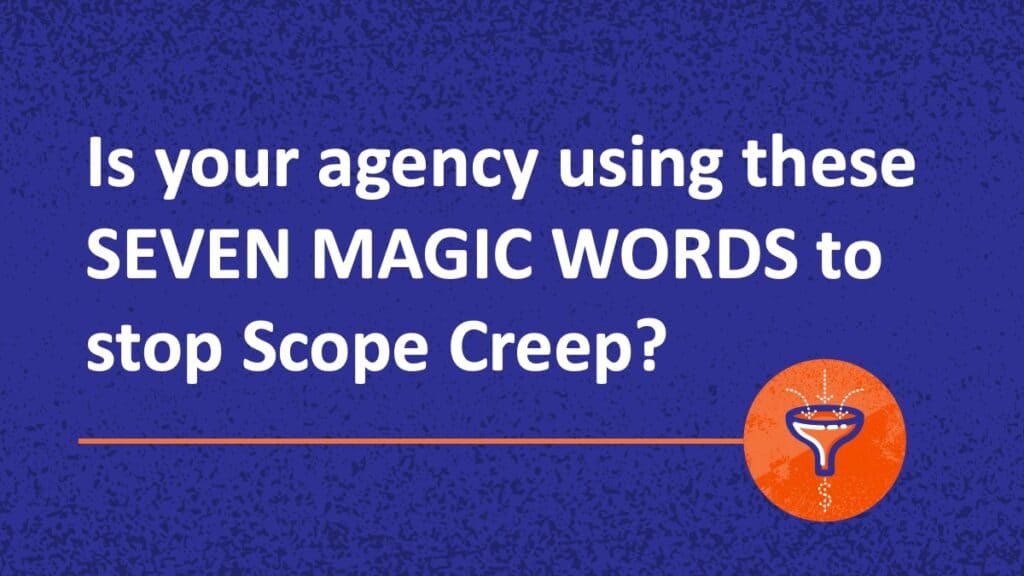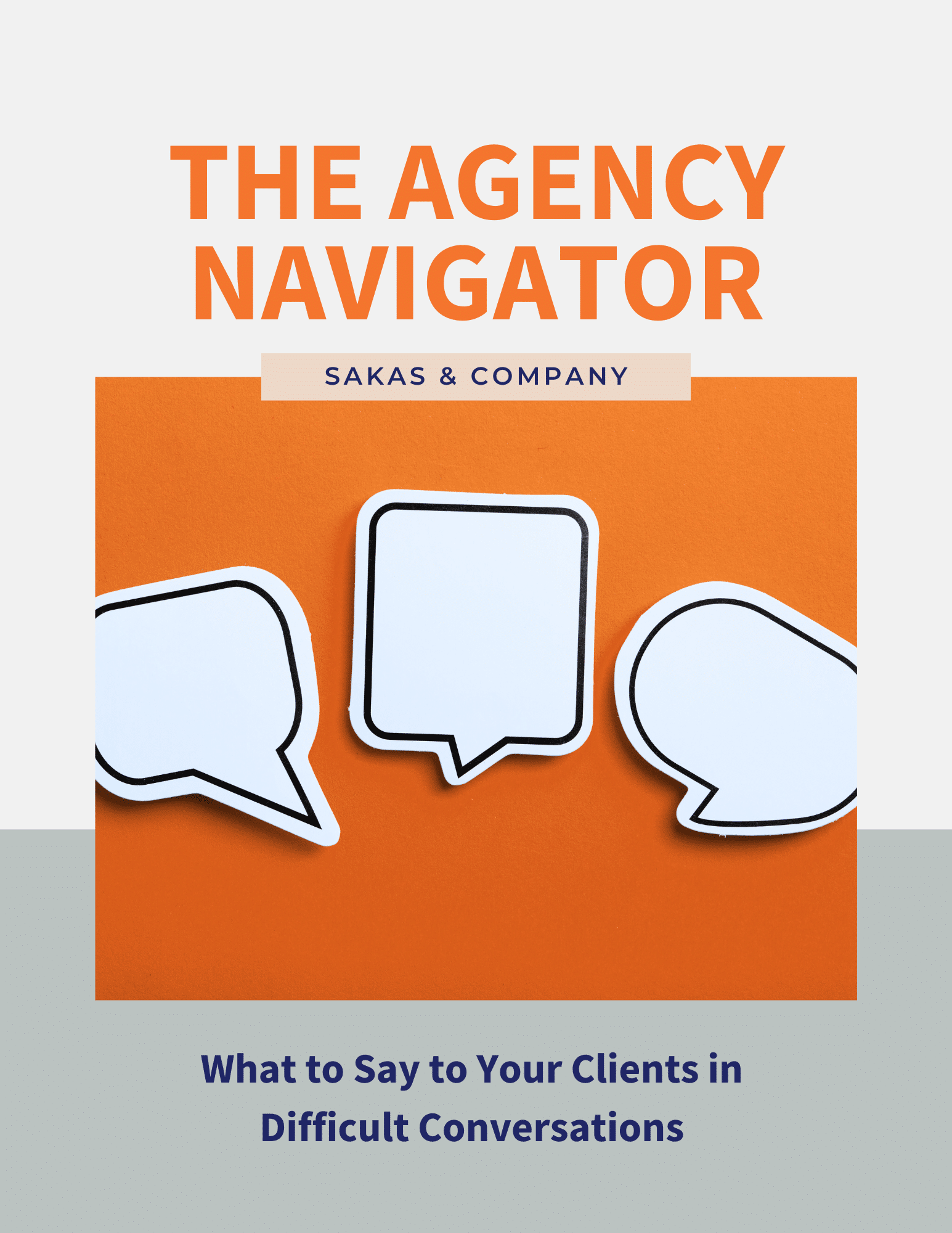
Stop scope creep at your marketing agency with these 7 magic words.
Unpaid scope creep is one of the biggest threats to your agency’s profits, because you feel pressure to say “yes” without evaluating the financial impact of that “yes.”
When a client asks for something that’s out of scope (OOS), it’s easy to feel like they’ve put you on the spot:
Are they thinking this new thing is free? I don’t want to say “yes” but I don’t want to say “no.” Are they expecting an answer immediately? What do I do?
Start by asking questions to understand the business goals behind what they’d like to accomplish. Then, if their request is still on-strategy, ask your client: “Would you like an estimate for that?”
Asking this question stops scope creep in its tracks. It calls out that it’s a scope change, and it makes the client choose whether they want your marketing agency to invest further effort in evaluating the request.
How your clients will respond to this magic question
Depending on the agency’s positioning and client base, I typically see responses like this:
- 50% of the time, the client says, “Oh, that’s extra? Never mind.” Congrats—you just saved yourself from doing unpaid sales work when the client was never going to convert.
- 40% of the time, the client says, “Sure, let me know the estimate.” They may or may not ultimately proceed on the OOS, but they’ve committed to at least considering paying for the scope change.
- 10% of the time, the client says, “Wait, I thought that was already included.” This can feel awkward, but it’s actually a good thing—now you have an opportunity to discuss things, instead of having a client who assumed they should get free work.
If more than 10-15% of client responses are the last one—where clients keep wrongly assuming things were included all along—this usually means you need to fix a client onboarding problem. In my experience, you probably aren’t managing client expectations as they go from sales to implementation.
Why this works for Fixed-Bid, Agile, and Time & Materials
Asking “Would you like an estimate for that?” is especially important for fixed-bid work—since anything out of scope should be billable.
But it also comes in handy when you do Agile or time & materials (T&M) billing, in that something new will require more time than you’d previously estimated for things. You don’t want T&M clients to be surprised to find the total is much higher than they expected.
This works when your agency finds upsell opportunities, too
The estimate question doesn’t always have to be client-initiated—often, your agency will find upsell opportunities where the client would benefit from hiring you to do more work. Remember, the client is relying on your agency for your marketing and technical expertise—they want proactive, not just reactive.
Instead of immediately moving forward to create an estimate as soon as you see an OOS or upsell opportunity, ask the client if they want the new thing you’ve identified.
If they are interested, they’re already primed to sign the change order. And if they’re not interested—even after you give a preview of the potential benefits—you just eliminated some non-billable sales time.
Not immediately saying “yes” or “no” buys you time
When a client asks for something that is out of scope (OOS), your initial internal reaction may be, “Uh oh, now we have to have a difficult conversation. Do they think that’s included? I don’t know if that’s included.”
Especially if the client has called you or if they’ve sent an urgent email, it’s easy to feel like you’re on the spot. The key is to avoid making an on-the-stop commitment to complete their request.
The whole point is to buy time to evaluate their request. Once you’ve made a firm commitment, it’s hard to back out later without hurting the relationship. It’s better to not make that firm commitment in the first place, until you’re sure you know what you’re getting into.
Getting client buy-in makes the relationship more equal
Without an incentive to cut back, some clients will ask you for estimates all day long. Keep an eye on which clients approve estimates and which never or rarely convert.
Most agencies don’t charge clients for non-binding estimates. If you don’t charge for estimates, be sure you include some social pressure when you confirm moving forward on creating an estimate.
This is especially important for clients who ask for estimates but then never sign off on them. When someone keeps flaking out, you need to insist on getting a bigger commitment before you do another estimate. For instance, say: “We’re glad to evaluate that for you. From past experience, that will be at least $5,000. We’ll need several hours to evaluate this for you. Would you like us to proceed with creating a specific estimate for you?”
You can use my Reason-Options-Choose framework to navigate those conversations.
Applying this to stop scope creep at your agency
Train your agency’s team to ask clients, “Would you like an estimate for that?” And practice asking the question yourself in your own client interactions. You’ll find that your agency’s work is more profitable and more satisfying, because you’re working for clients who appreciate and pay for all your work!
Question: How do you stop scope creep at your marketing agency?


